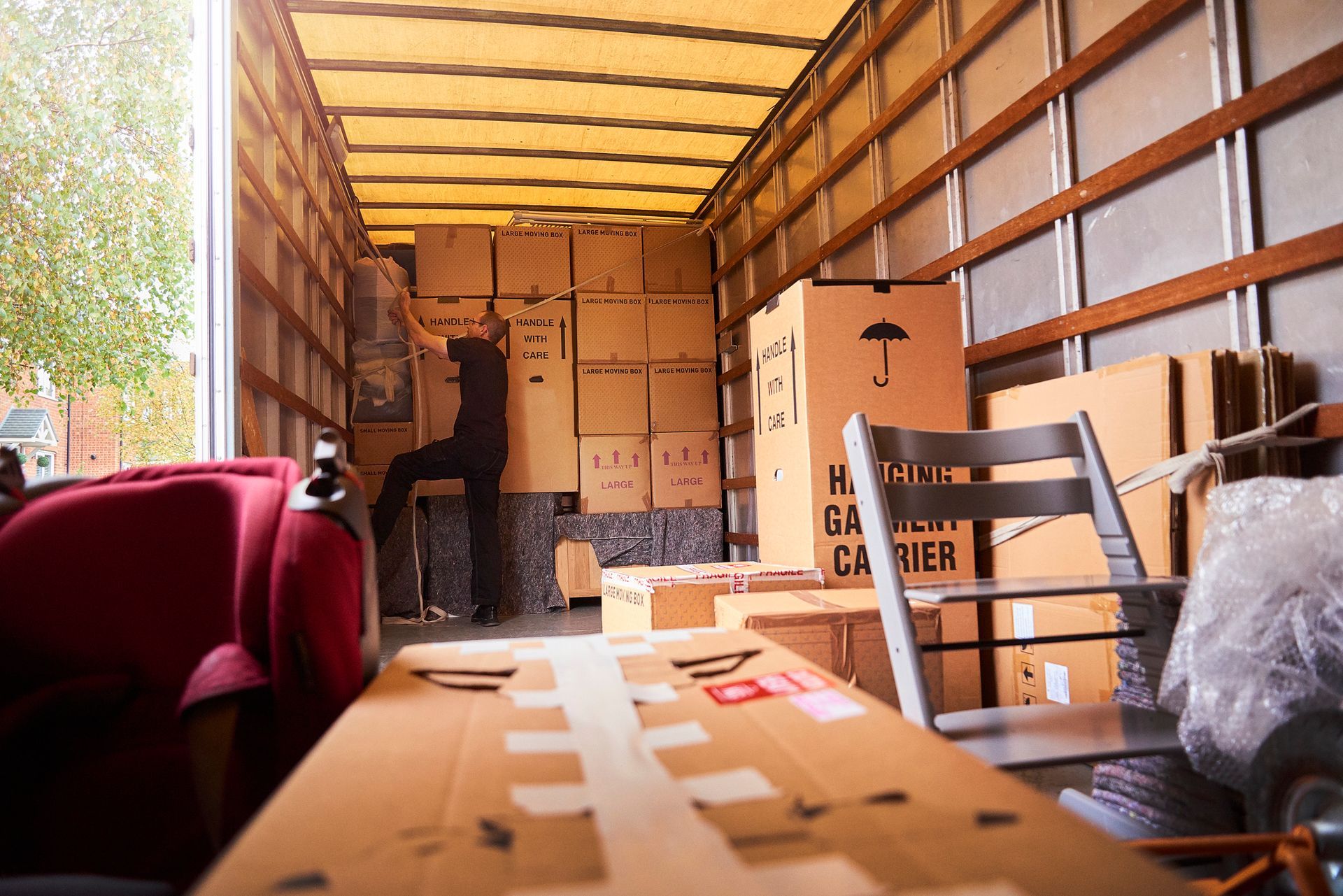How to Move During the Work Week or Work Day
- By Admin
- •
- 01 Apr, 2021
- •

Did you schedule a move during your work-week - or during your work-day? If you need to move and work at the same time, take a look at the questions to ask right now.
How Much Time Will Your Employer Allow You to Take Off?
You typically work Monday through Friday. But you had to schedule your move mid-week. Before you attempt to juggle your job and your move simultaneously, ask your employer for time off. Whether you have vacation, sick, or personal days available, these paid time off options allow you to get a paycheck and move at the same time.
Even though you may have paid time off options to use, it's likely you'll need to clear your day away from the office with your manager or boss. Make sure your employer knows about your moving plans well in advance of the move-out/move-in day. The more notice you give your employer, the less likely it is that meetings, assignments, reports, conferences, calls, or anything else will interfere with your moving plans.
Do You Work from Home?
With a growing number of businesses offering or mandating work from home jobs, more Americans don't need to go into the office. According to research from Stanford University, 42 percent of the labor force in the United States works from home. If you're one of the many Americans who permanently or temporarily work from home, a move can provide challenging.
Whether you work for yourself, are a contract/gig worker, or work as a part/full-time employee for another company, you can't work and move at the same time. Even though you don't need to leave your home to work, you still need to take time off to complete your move. This means you may need to talk to your employer about taking work from home time off or switching your schedule from weekday hours to weekend or evening times.
If you work for yourself, you will need to schedule client meetings, assignments, or anything else you typically do around the move-out/move-in times. Failure to rearrange your normal workday schedule may mean you miss out on work or potential earnings-especially if you're a contract or gig worker.
Along with your schedule, you also need to consider how and when you'll move your home office. An efficient move can minimize downtime and help you to get your business (or job) back on track in the least amount of time possible.
How Should You Move a Home Office?
Now that you know the basics of scheduling your mid-work-week or work-day move, it's time to move on to the next step and start the packing process. Home-based workers and some people who work outside the home (but often take work home with them) may have a designated home office space.
To move your office easily and efficiently, pack anything you rarely use or can wait to use first. These may include surplus office supplies, seasonal items, reference materials, or furniture you don't use daily (such as an end table or extra chair). You can also pack decorative accents, knick-knacks, pencil holders, and similar items ahead of the move. This reduces the total time you'll need to take off from work.
If you need to get some of your work done on a moving day, keep necessities (such as your laptop or important files) out. Pack these items with you and move them in your car. This allows you to work as needed during your move. While office furniture is essential for your comfort on most days, you can switch up your workspace for the move. Pack your desk and chair ahead of time and create a makeshift home office from bins and pillows or work from your car for the day.
Do you need help with your next move? Contact Los Flores Movers for more information.
How Much Time Will Your Employer Allow You to Take Off?
You typically work Monday through Friday. But you had to schedule your move mid-week. Before you attempt to juggle your job and your move simultaneously, ask your employer for time off. Whether you have vacation, sick, or personal days available, these paid time off options allow you to get a paycheck and move at the same time.
Even though you may have paid time off options to use, it's likely you'll need to clear your day away from the office with your manager or boss. Make sure your employer knows about your moving plans well in advance of the move-out/move-in day. The more notice you give your employer, the less likely it is that meetings, assignments, reports, conferences, calls, or anything else will interfere with your moving plans.
Do You Work from Home?
With a growing number of businesses offering or mandating work from home jobs, more Americans don't need to go into the office. According to research from Stanford University, 42 percent of the labor force in the United States works from home. If you're one of the many Americans who permanently or temporarily work from home, a move can provide challenging.
Whether you work for yourself, are a contract/gig worker, or work as a part/full-time employee for another company, you can't work and move at the same time. Even though you don't need to leave your home to work, you still need to take time off to complete your move. This means you may need to talk to your employer about taking work from home time off or switching your schedule from weekday hours to weekend or evening times.
If you work for yourself, you will need to schedule client meetings, assignments, or anything else you typically do around the move-out/move-in times. Failure to rearrange your normal workday schedule may mean you miss out on work or potential earnings-especially if you're a contract or gig worker.
Along with your schedule, you also need to consider how and when you'll move your home office. An efficient move can minimize downtime and help you to get your business (or job) back on track in the least amount of time possible.
How Should You Move a Home Office?
Now that you know the basics of scheduling your mid-work-week or work-day move, it's time to move on to the next step and start the packing process. Home-based workers and some people who work outside the home (but often take work home with them) may have a designated home office space.
To move your office easily and efficiently, pack anything you rarely use or can wait to use first. These may include surplus office supplies, seasonal items, reference materials, or furniture you don't use daily (such as an end table or extra chair). You can also pack decorative accents, knick-knacks, pencil holders, and similar items ahead of the move. This reduces the total time you'll need to take off from work.
If you need to get some of your work done on a moving day, keep necessities (such as your laptop or important files) out. Pack these items with you and move them in your car. This allows you to work as needed during your move. While office furniture is essential for your comfort on most days, you can switch up your workspace for the move. Pack your desk and chair ahead of time and create a makeshift home office from bins and pillows or work from your car for the day.
Do you need help with your next move? Contact Los Flores Movers for more information.
If you're moving homes, you may be worried about transporting your fragile antiques. Read our blog for tips to safely move your antiques to your new house.
Relocating your business to a larger space is an exciting milestone for any business owner. Read our blog to learn how to make the move successful.
While DIY moving may appear to be cheaper on the surface, it can eventually cost you more. Read on to see how hiring professionals can help you save!
If you're an empty-nester who wants to downsize your home, a professional moving company can help. Learn more about how experts can make the process easier.
You should keep some items with you during your move in a separate bag. Take a look at what you need to know about a summer moving essentials bag.
You should keep some items with you during your move in a separate bag. Take a look at what you need to know about a summer moving essentials bag.
When it comes time to pack up your office and move to a new building or room, coordination of that move can be difficult. Read to learn a few tips.
Do you need to move on short notice? If so, read our blog to learn about a few tips that can help you stay organized and have a successful transition.
The moving process involves several steps for success. Since the whole process can be confusing, consider these tips to make moving day a breeze.

